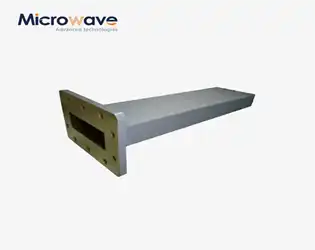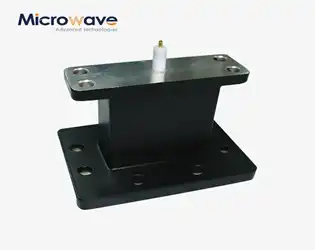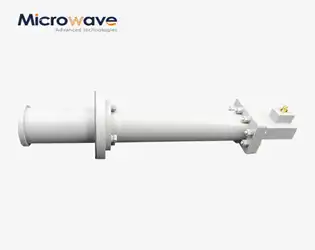BLOG

How Does the Broadwall Directional Coupler Support Wide Frequency Ranges Efficiently?
June 26, 2025
In today's rapidly evolving microwave technology landscape, the demand for components that can efficiently handle wide frequency ranges has never been more critical. The Broadwall Directional Coupler stands at the forefront of this technological revolution, offering unparalleled performance across extensive frequency spectrums while maintaining exceptional signal integrity. This sophisticated microwave component achieves its remarkable wide-frequency capabilities through precision-engineered Tchebyscheff coupling hole distributions and advanced tapered load elements, enabling seamless operation from DC to 18 GHz and beyond. Understanding how these couplers support such broad frequency ranges efficiently is essential for engineers and system designers working in telecommunications, aerospace, defense, and satellite communication applications where frequency versatility and performance reliability are paramount.
Why Consider Waveguide Twist for Navigation and Avionics Applications?
June 25, 2025
In the sophisticated world of modern aviation and aerospace technology, the reliability and precision of signal transmission systems play a critical role in ensuring safe and efficient operations. Navigation and avionics applications demand components that can maintain signal integrity across complex routing configurations while operating under extreme environmental conditions. This is where waveguide twist technology emerges as an indispensable solution. The WG Twist represents a fundamental advancement in microwave engineering, offering the capability to redirect electromagnetic waves through precise angular rotations without compromising signal quality or introducing significant losses. For navigation and avionics systems that rely on accurate radar positioning, satellite communication links, and electronic warfare capabilities, waveguide twist components provide the essential flexibility needed to accommodate intricate system architectures while maintaining the stringent performance standards required for mission-critical applications in aerospace environments.
How Does ADM's 24m Microwave Darkroom Testing Ensure Superior Active Limiter Performance?
June 25, 2025
Advanced Microwave Technologies Co., Ltd's state-of-the-art 24m Microwave Darkroom serves as the cornerstone for delivering exceptional Active Limiter performance across critical microwave applications. This cutting-edge testing facility enables comprehensive validation of power protection capabilities, ensuring that each Active Limiter meets the stringent requirements of satellite communications, aerospace, and defense systems. Through precise far-field measurements and controlled testing environments spanning frequencies from 0.5 to 110GHz, our darkroom facility guarantees that every Active Limiter delivers reliable protection against power surges while maintaining optimal signal integrity for mission-critical applications.
Can Durable Waveguide Unmatched Termination Components Withstand Extreme Environmental Conditions?
June 25, 2025
In today's demanding microwave communication landscape, the reliability of waveguide unmatched termination components under extreme environmental conditions has become a critical concern for engineers and system designers. These specialized components play a vital role in preventing signal reflections and maintaining system stability across various high-frequency applications. The question of whether waveguide unmatched termination components can withstand harsh environmental conditions is particularly relevant for satellite communications, aerospace, defense, and telecommunications industries, where equipment must operate reliably in challenging conditions ranging from arctic temperatures to desert heat, high humidity, and intense vibrations. Understanding the durability characteristics of these components is essential for ensuring long-term system performance and minimizing costly downtime in mission-critical applications.
How Do Material Choices in Waveguide Transitions Impact Long-Term Durability?
June 25, 2025
In the rapidly evolving landscape of microwave and millimeter-wave technology, waveguide transitions serve as critical components that determine system performance, reliability, and operational longevity. The selection of appropriate materials for these transitions directly influences their ability to withstand environmental stresses, maintain electrical performance, and deliver consistent results over extended operational periods. Understanding the relationship between material properties and durability becomes essential for engineers designing systems that must operate reliably in demanding applications ranging from satellite communications to high-power radar systems.The answer to how material choices impact long-term durability lies in the fundamental interaction between material properties and operational demands. Waveguide Transition durability depends primarily on thermal stability, corrosion resistance, mechanical strength, and electrical conductivity of the chosen materials. High-quality copper alloys and aluminum variants offer superior thermal management and electrical performance, while specialized coatings and treatments enhance environmental resistance. Advanced manufacturing techniques, such as those employed in water-cooled systems, further extend operational life by managing thermal stress and preventing material degradation under high-power conditions.
June 25, 2025
In the rapidly evolving aerospace industry, where precision and reliability are paramount, the End Launch Waveguide to Microstrip Adapter emerges as a critical component for seamless signal transmission. This sophisticated microwave component serves as a bridge between waveguide and microstrip transmission lines, enabling efficient conversion of electromagnetic signals across different propagation mediums. The aerospace sector demands components that can withstand extreme environmental conditions while maintaining exceptional performance characteristics, making these adapters indispensable for satellite communications, radar systems, and navigation equipment. Their ability to handle high-frequency signals with minimal loss while providing robust mechanical stability makes them essential for modern aerospace applications where signal integrity directly impacts mission success and safety.
June 24, 2025
In high-power microwave systems, thermal management stands as one of the most critical challenges facing engineers and system designers. The Water-cooled Twist Waveguide emerges as an innovative solution that combines advanced cooling technology with flexible signal routing capabilities to address overheating issues in demanding applications. This sophisticated component integrates a comprehensive water-cooling system directly into the waveguide structure, enabling efficient heat dissipation while maintaining optimal electromagnetic transmission performance. By circulating coolant through dedicated channels within the waveguide assembly, excess thermal energy generated during high-power operations is effectively removed, preventing component degradation and ensuring consistent system reliability across extended operational periods.
Why Are Low Back Radiation Features Crucial in Corrugated Horn and Multimode Horn Antennas?
June 24, 2025
In the sophisticated world of microwave communication systems, low back radiation features represent one of the most critical performance parameters that distinguish exceptional antenna designs from mediocre ones. The significance of minimizing unwanted back radiation in Corrugated Horn and Multimode Horn Antenna systems cannot be overstated, as these characteristics directly impact signal integrity, system efficiency, and overall communication reliability. When electromagnetic energy reflects backward from an antenna, it creates interference patterns that can severely compromise the quality of transmitted and received signals, making low back radiation control essential for applications ranging from satellite communications to advanced radar systems.




